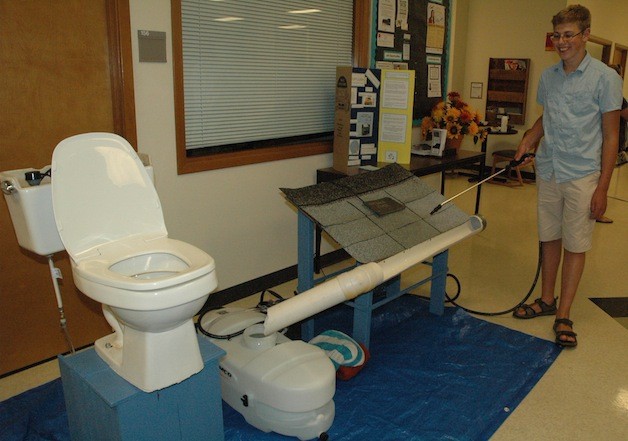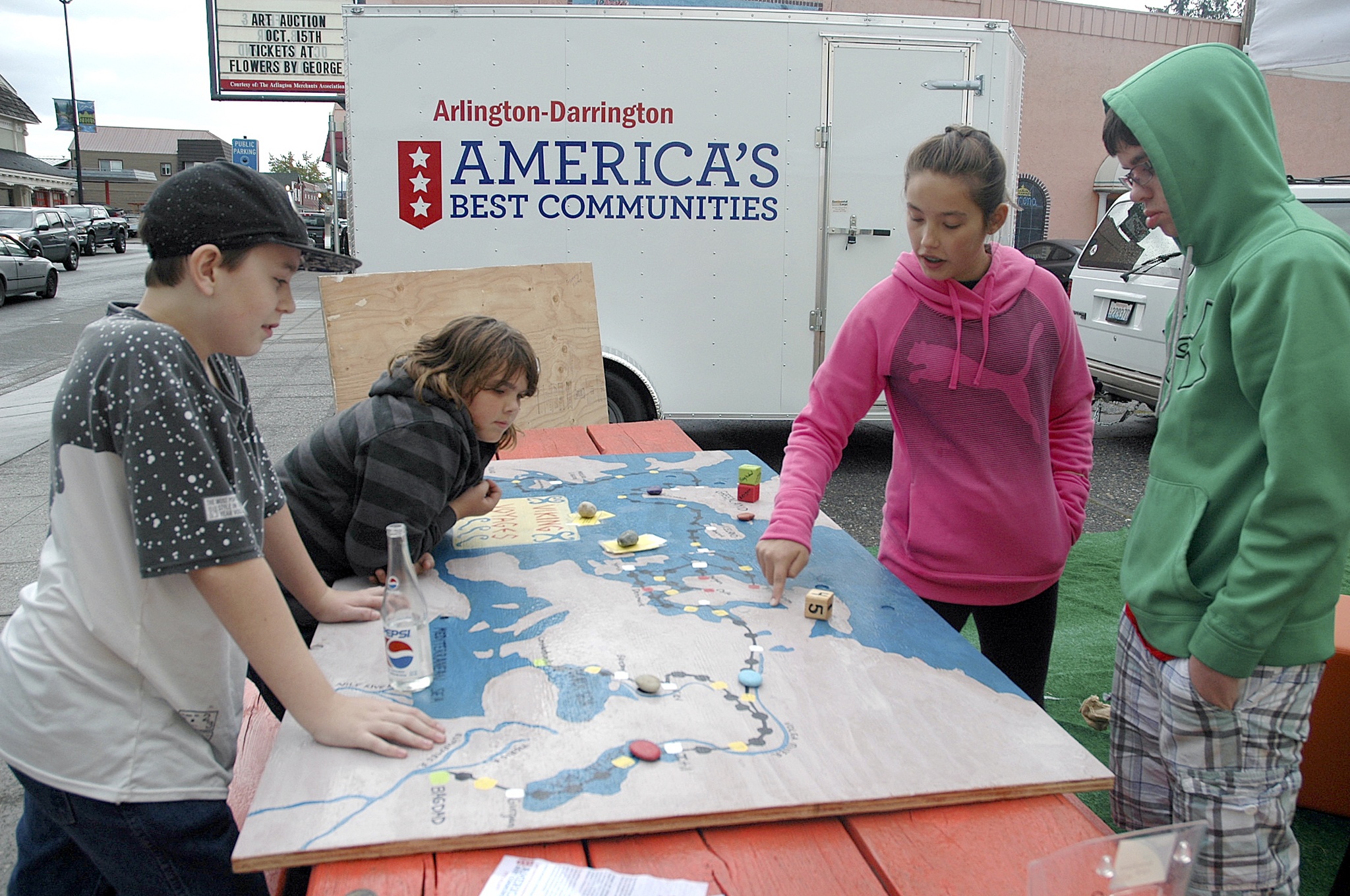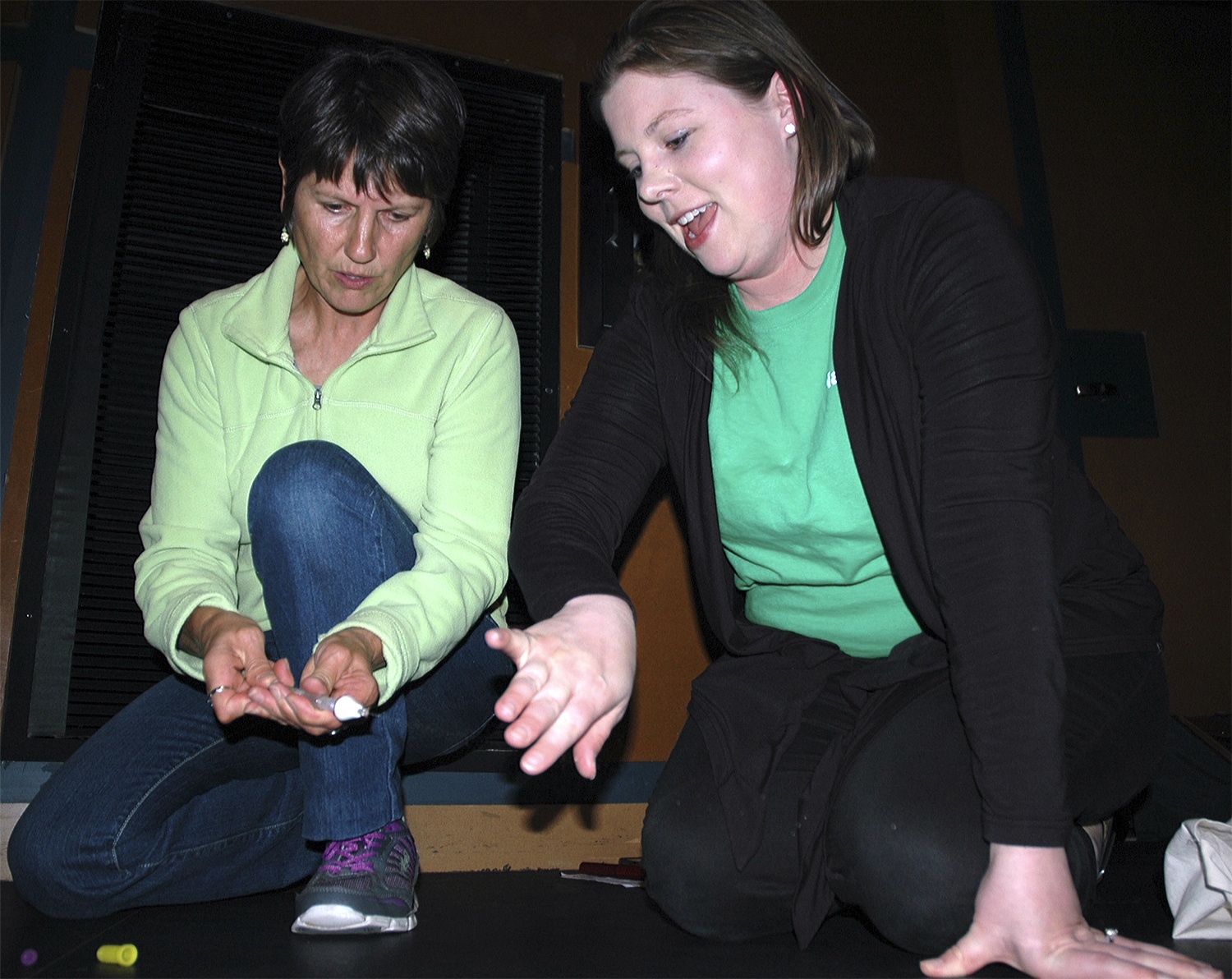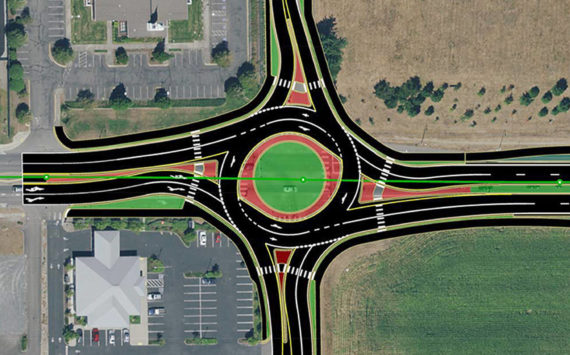ARLINGTON — Close to 40 high school students in the Arlington School District gathered at Weston High School July 30 to present ideas on how the district could decrease its carbon footprint by utilizing renewable energy resources.
The students’ presentations were the culmination of a Science, Technology, Engineering and Math program July 21-30, during which they took field trips throughout the state to gain hands-on lessons in real-world, energy-saving measures.
Arlington High junior Blake Kucera compared the costs of installing two types of solar-power systems at the high school and stadium. In both cases, the solar panels alone would cost $250,000, while an inverter from Blue Frog Solar would add $39,600. By contrast, an inverter and battery system from Outback Power would add as much as $80,000, but Kucera touted its additional benefits.
“An inverter converts direct to alternating current, so that you can run straight off the solar panels, but if the power grid goes down, you can’t use it, in case they’re trying to fix the power lines,” Kucera said. “With batteries, you can store energy from the panels, and still run off the batteries while the grid goes down.”
If the power went out in the middle of a school day, Kucera explained that the computers would likely go down as well, but everything from the lights to the freezers for school meals still could be powered.
“You could still teach classes on the whiteboards,” said Kucera, who will enroll at Everett Community College next year and plans to open a green business someday.
Fellow AHS junior Jacob Rengen demonstrated a model for how rainwater runoff from the school’s roof and parking lots could be used for its toilets, as well as to water its grounds, sports fields and Future Farmers of America greenhouse.
“We’d still need to use treated water to wash our hands,” Rengen said. “When water is treated by the PUD, though, it releases carbon dioxide into the atmosphere, so we want to minimize that.”
Rengen explained that the school could run off a vault of stored rainwater for nine days, thanks to the precipitation levels of the Northwest. While installing such a system would cost $180,000, he said it would pay itself off in nine years, after which it would save the school $20,000 and 2 million gallons of water a year.
AHS sophomore Lilly Hanna demonstrated an air barrier test with a miniature house and an infrared camera, to show where heat can leak from a structure.
“Air barriers can protect a building from the loss of both heat and cool air, and it costs very little to install for how much money it saves,” Hanna said. “Caulking, insulation and spray foam are all ways of protecting your air, but you have to make sure all your vents are closed and your water pipes have run recently to get an accurate reading on your test.”
Hanna noted that the average house has a collective air barrier hole of two square feet, whereas a large school building can have a hole as big as 15 square feet.








